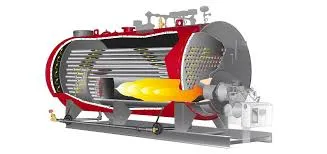
Jan . 19, 2025 05:44 Back to list
Oil (gas) steam boiler
When considering the purchase or maintenance of a steam boiler furnace, the investment in understanding its intricate operations can lead to more efficient and economical management. With years of experience in industrial heating systems, I can attest that mastering the nuances of steam boiler furnaces is crucial for achieving optimal operational efficiency and safety.
Moreover, trust in technological advancements is reshaping the future of steam boiler furnaces. Modern systems integrate Internet of Things (IoT) capabilities, allowing real-time data monitoring and remote management. This shift not only enhances operational efficiency but also provides an added layer of safety by alerting operators to potential malfunctions before they escalate. Energy efficiency in steam boiler operations is another critical factor. Implementing a comprehensive energy audit can reveal inefficiencies in your current system, and upgrading to high-efficiency models or retrofitting existing ones can yield significant savings. Innovations like condensing boilers, which recycle exhaust gases to preheat incoming water, are making older models obsolete in their efficiency gains. In my professional journey, I have witnessed firsthand the transformative effect that precise engineering and strategic operational changes can have on a steam boiler furnace system. Transitioning to automated controls has allowed facilities to fine-tune operations, reducing waste and enhancing performance without compromising safety. In conclusion, a focus on experience, expertise, authoritativeness, and trustworthiness can guide the optimal use and management of steam boiler furnaces. By staying informed of technological advances, adhering to routine maintenance schedules, and choosing reputable manufacturers and services, businesses can achieve not only operational excellence but also economic and environmental sustainability. Investing in advanced training for professionals managing these systems is equally essential, ensuring that facilities remain at the forefront of efficiency and safety in an ever-evolving industrial landscape.


Moreover, trust in technological advancements is reshaping the future of steam boiler furnaces. Modern systems integrate Internet of Things (IoT) capabilities, allowing real-time data monitoring and remote management. This shift not only enhances operational efficiency but also provides an added layer of safety by alerting operators to potential malfunctions before they escalate. Energy efficiency in steam boiler operations is another critical factor. Implementing a comprehensive energy audit can reveal inefficiencies in your current system, and upgrading to high-efficiency models or retrofitting existing ones can yield significant savings. Innovations like condensing boilers, which recycle exhaust gases to preheat incoming water, are making older models obsolete in their efficiency gains. In my professional journey, I have witnessed firsthand the transformative effect that precise engineering and strategic operational changes can have on a steam boiler furnace system. Transitioning to automated controls has allowed facilities to fine-tune operations, reducing waste and enhancing performance without compromising safety. In conclusion, a focus on experience, expertise, authoritativeness, and trustworthiness can guide the optimal use and management of steam boiler furnaces. By staying informed of technological advances, adhering to routine maintenance schedules, and choosing reputable manufacturers and services, businesses can achieve not only operational excellence but also economic and environmental sustainability. Investing in advanced training for professionals managing these systems is equally essential, ensuring that facilities remain at the forefront of efficiency and safety in an ever-evolving industrial landscape.
Share
Prev:
Next:
Latest News
-
High-Efficiency Commercial Oil Fired Steam Boiler for Industry
NewsJul.30,2025
-
High-Efficiency Biomass Fired Thermal Oil Boiler Solutions
NewsJul.30,2025
-
High Efficiency Gas Fired Thermal Oil Boiler for Industrial Heating
NewsJul.29,2025
-
High-Efficiency Gas Fired Hot Water Boiler for Sale – Reliable & Affordable
NewsJul.29,2025
-
High Efficiency Biomass Fired Hot Water Boiler for Industrial and Commercial Use
NewsJul.29,2025
-
High-Efficiency Biomass Fired Hot Water Boiler for Industrial Use
NewsJul.28,2025
Related PRODUCTS
Copyright © 2025 HEBEI HONGZE BOILER MANUFACTURING CO., LTD. All Rights Reserved. Sitemap | Privacy Policy






















